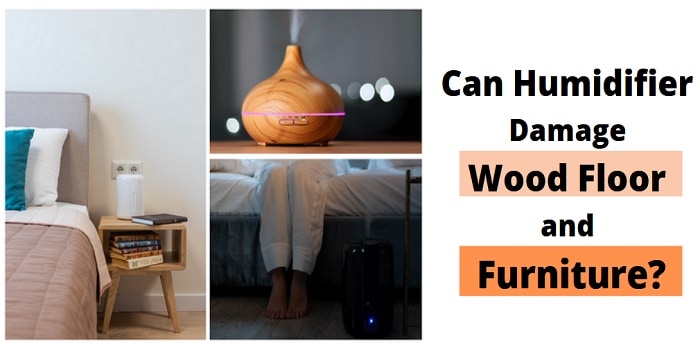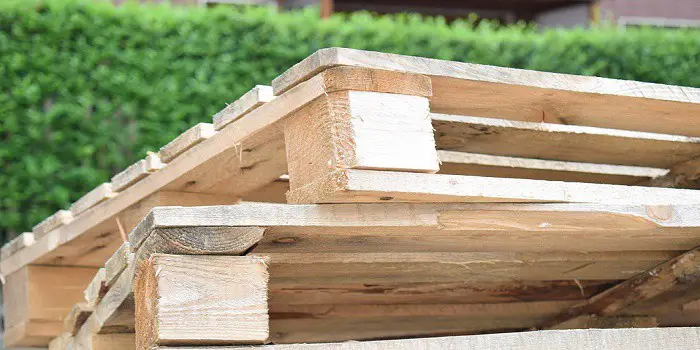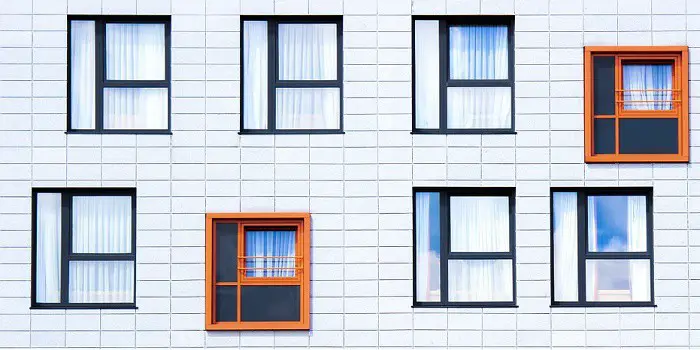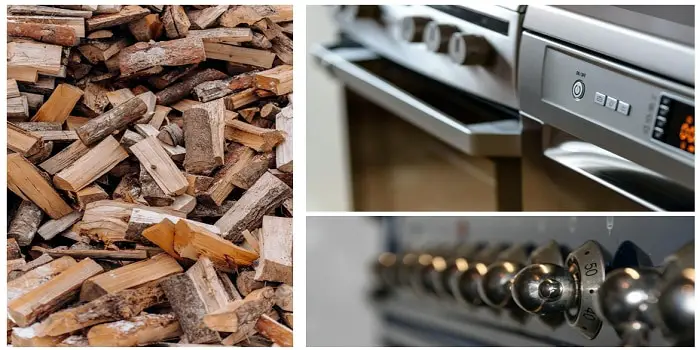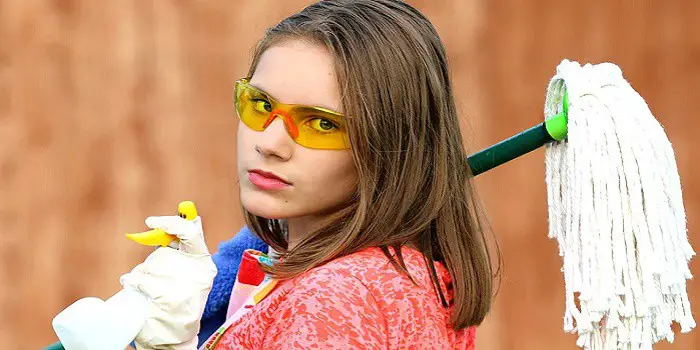
Bleaching agents are among the most overlooked alternatives when homeowners need to clean their old wood furniture, floors, or decking areas.
While bleaching isn’t difficult for DIYers, you should know what it can do to your wood, before you plan to use them in your home for cleaning.
Will bleach damage your wood surface? The short answer is yes.
It’s not very safe and effective to clean your wood furniture or hardwood floors with bleach and water. This is due to the reason that the chlorine in bleach does not penetrate the wood. It’s only the water that will clean the wood without getting the bleach absorbed.
With that said, if you spray or apply it correctly followed by proper rinsing, bleach solutions can sometimes work fairly well on certain wood surfaces.
Can You Clean Wood with Bleach?
Because bleach is harsh and can break down the wood’s finish by seeping down into the porous fibers, it can cause discoloration.
Plus, if you are not careful it can weaken the structure of the wood which can cause wood to get damaged soon.
Bleach when used properly and in small quantities acts as a wonderful remedy to fix dull water stains on wood surfaces like your oak table or hardwood floors.
Also, it’s effective enough to lighten (or remove) stains, dye colors, and even rust stains from the wood.
You can also bleach wood to sanitize, disinfect and get rid of molds from the already stained wood.
And worry not, it does so without affecting the natural color and grains of wood.
With all these benefits in mind, it’s extremely important that you know the types of bleach available and how to apply them on wood so that it does all the cleaning without affecting its beautiful natural appearance.
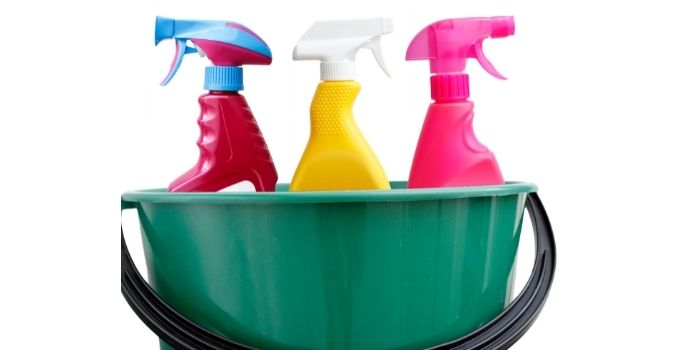
Types of Bleach Cleaners for Cleaning Wood
Bleach cleaners you can use for cleaning wood typically fall into three main types.
These include:
1- Chlorine bleach
These are the common household bleaches referred to as laundry bleach.
they are good at removing the stains and/or dye colors from the wood without affecting the wood’s natural color.
However, depending on the type of wood you are using it on, these bleaching agents can leave an unnatural whitewash look and can even cause the wood grains to look blurred.
Pros:
- It’s strong and powerful
- Good for most laundry clothes
- Disinfects and deodorizes as well
Cons:
- Comes with a harsh smell
- Can make the wood look dull
2- Oxygen bleach cleaners
These cleaning agents will create hydrogen peroxide along with a soda ash cleaning base when mixed with water.
You can safely use these A/B bleaches for most wood types for cleaning stains, dirt, debris, and grime deposits.
Also, these cleaners are effective in getting rid of mildew stains and graying on wood caused by harmful UV rays of the sun.
Pros:
- It’s gentler and less toxic
- Good for bleaching colored-garments
- Does not harm your hand skin during application
Cons:
- Not as strong as chlorine bleach
- Can alter the natural color of the wood
3- Oxalic-acid-based cleaners
Oxalic acid is effective in removing water and rust stains.
You can also use it for getting rid of the teak stain and for lightening the graying effect of weather-exposed wood.
Tannin staining can be an additional problem with certain wood types (like oak, cedar, and redwood).
And if you want to remove these types of tannin stains from your wood surfaces, these bleaching agents can be most helpful.
Pros:
- Good for removing tannin stains
- Can remove iron stains as well
Cons:
- Not effective for mildew stains
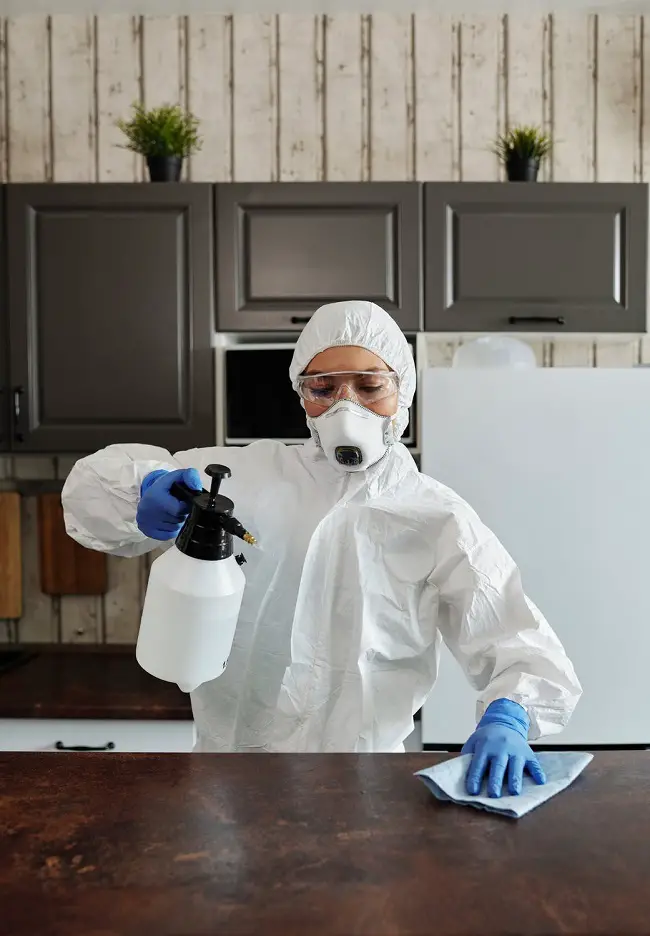
Steps for Cleaning and Removing Stains from Wood
Since oxalic acid can be highly toxic most woodworkers and restorers consider using hydrogen peroxide bleach (or A/B bleach) for a safer and more powerful wood bleaching action.
You can however choose the one that is most suitable for your specific wood type and project.
Once you know what kind of bleach you need to use for fighting water stains on your specific wood type, here are the steps you should follow…
Step 1- Prepare the Surface
Start by cleaning the wood furniture or floors, you want to bleach, using a piece of cotton cloth or a dust mop.
Make sure you get rid of all the dust and dirt from the surface.
You may also need to remove the old paint, or varnish – if it’s already peeling or flaking.
To perform this paint removal job, use lacquer thinners, a wood scraper, or a piece of fine-grit sandpaper.
If the paint is hard to remove in some places, use a heat gun to soften the paint first.
Step 2- Apply the Bleach & Scrub
Now apply/spray your preferred bleach cleaner on the area that is stained with water.
If the area is large, it’s good to test the bleach in a small section before applying it to the complete surface.
Also, make sure that you do not spray too much on the beach as it can cause problems.
Once you have applied the bleach, allow it to sit for 5-10 minutes.
Then using a soft cloth scrub the stained area thoroughly to remove the water stains.
If the stains don’t go away in one round, spray and scrub the surface again.
You may need to use a concentrated bleach solution if the stains are too stubborn to go away.
Step 3- Neutralize the Bleaching Agent
Once you have removed the water stains (as much as you can), wipe the excess bleach off the surface.
If you are working on a floor, wash off the bleach residue built up with clean water.
Or if working on a table section, use a dampened cloth.
After getting the area cleaned, it’s important to neutralize the alkaline effect of bleach with baking powder, vinegar, or borax.
Depending on the bleaching agent you have used you may need to use a different neutralizer.
Borax, for example, is a good neutralizer for oxalic acid and will work very well for neutralizing the bleach on hardwood floors.
Step 4- Gently Sand the Surface
After you have cleaned and neutralized the bleached surface, sand the wood surface gently with a fine-grit sandpaper.
This will help to remove any remaining stains or old varnish.
Plus, it will also fix any discoloration or faded stain marks that may be left behind due to the bleaching agent.
Step 5- Refinish with a Clear Coat
Once the sanding is done, apply the clear coat of wood finish that you want.
Usually, a layer or two of polyurethane will work best to refinish the cleaned and bleached stain spot.
Keep in mind, that if the water stains are large and too old or stubborn, it may be hard to remove them completely and match the original wood color.
You will, however, get most of them faded if you work patiently to fix the problem.
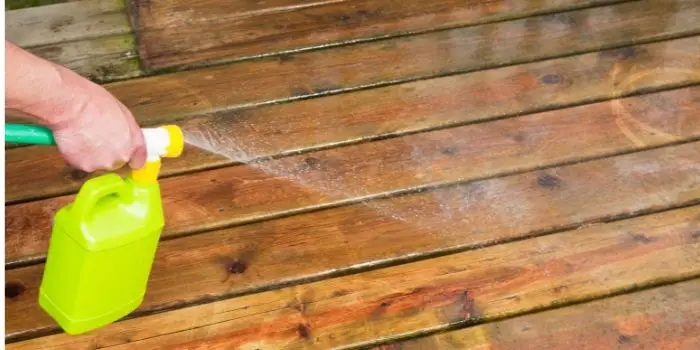
Tips and Warnings When Bleaching Wood for Stain Removal
If your piece of wood furniture gets blotchy, discolored, or water-stained, bleaching the wood can be a great way for preparing the piece for a new stain.
However, since it’s toxic and caustic stuff you are dealing with, you should be safe enough while coming in direct contact with it.
Here are a few things you should keep in mind…
1- Work in a ventilated space
First of all, you should be working in a well-ventilated open space with windows and doors open.
Also, it’s good to work on a concrete surface (like in your basement or backyard) as the acidic nature of bleach can damage surfaces like plastic, wood, and many others.
Do not forget to wear gloves and eye goggles as protection when bleaching wood.
Using a face mask along with proper long sleeves clothing is also recommended while using such chemicals for a long.
2- Clean and experiment with your wood
If it’s bare unfinished or unpainted wood you want to clean with bleach, consider cleaning the wood surface with water or mineral spirits.
Use a clean soft rag for clean-up and then a dry cloth for drying the surface.
Before you proceed with bleaching, make sure that the wood surface is completely dry.
3- Neutralize the wood
If your goal is to not only remove the stains but also to lighten the darker color of the wood (such as oak, beech, ash, and gum) neutralizing the wood is important.
You should do it between the treatments (and after bleaching) wood for applying a new stain color or varnish over it.
Use 50-50 white vinegar and water solution. Apply it with a clean piece of rag. This will help you achieve the desired wood shade.
Once you have neutralized and dried the wood, sand the coarse wood with sandpaper to achieve a smoother finish.
Besides following the above tips, here are a few mistakes you should avoid when using bleach to get stains out of water-damaged wood:
a) Never use metal bowls:
Since household bleach is acidic and can damage metal surfaces consider using glass or a ceramic bowl for working.
b) Do not mix the bleach ahead of time:
Bleaching power gets activated and will begin to dissipate as soon as you mix it.
So, it’s good to use a small amount at a time in a cup and work on the wood surfaces in smaller sections.
Final Thoughts
Using bleach such as Colorx to remove the stains from wood can work great if you follow the process right.
Hopefully, you have found the steps, tips, and ideas helpful.
Make sure you keep yourself safe and use the product properly the next time you want to give your piece of wood furniture a new life.

Hi, I am Mark Garner a professional carpenter, woodworker, and DIY painter. I live in the small city of Peoria, Arizona as a semi-retired woodworker. I have started this blog with a simple motive to help you with my wood experience in this sector. If you like to know more about what I love doing and how it all got started, you can check more about me here.

